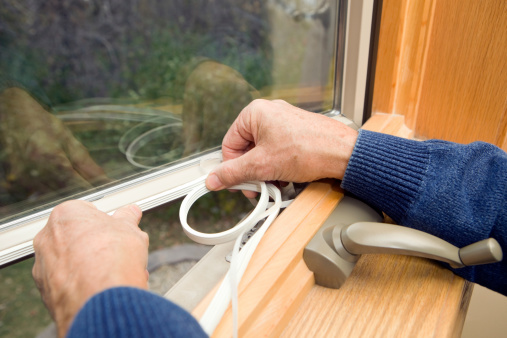
It’s happened once again. Somehow, the cold season has snuck up on us and the chilling temperatures and snowstorms are just around the corner. Whether you’re closing up a vacation home after Labor Day or getting your primary residence ready for the cold, it’s important to properly prepare your home for the harsh winter conditions.
By winterizing your home, you’ll not only help your home stay warm and comfortable, but you’ll also save money on utilities, while preventing costly repairs from possible damage. Here are six areas to focus on when winterizing your home for the chilly risks ahead.
Your Home’s Exterior
When snow piles up, it can make branches heavy and likely to break. Before the weather worsens, make sure to trim away tree branches, especially those that hang over your house. You’ll also want to clean out your gutters and position all downspouts away from your home. When downspouts are too close to your foundation, mold, mildew, dry rot, and water can get into the basement.
Your Doors & Windows
Weatherstripping will prevent cold air from flowing in through the cracks of your exterior doors and windows. But gaps and rips can form from wear and tear of regular use overtime, so make sure you inspect your stripping to make sure it’s secure. You can also use caulk to stop cold-air infiltration and plug up holes, cracks, and open seams around your windows. While it may not be super noticeable, these leaks can make a big difference in your home’s comfort — and your utility bills.
If you’re willing to make a long-term investment, installing storm windows provides an extra layer of protection against cold, snow, wind, and rain. They can be removed once the temperatures begin to rise and often last up to 30 years with quality care.
Your Water Pipes
Alleviate some stress of your hot water pipes by reducing exposure to harsh winds and cold temperatures. Insulating your pipes will minimize heat loss, save energy, and help keep the water hot inside of the pipe. Foam rubber sleeves, heat tape, or insulated wraps are a few affordable ways to ensure that you have hot water all winter long. Pipes in attics or crawl spaces should be top of your list.
Your Faucets
It may be as simple as running a small stream of cold water from your faucet, but by keeping the water in your pipes moving, they won’t have a chance to freeze, which can cause them to break or burst. You only need to do this with one faucet, but make sure it’s in the right location. Turn on a faucet on the opposite end of where your water comes into your house so that in can travel through your entire home water system.
Your Refrigerator
There’s always a possibility that the power will go out during a winter storm and the last thing you need is spoiled food. Make sure your refrigerator is on an energy efficient setting so that you don’t waste any excess electricity. And that optimal refrigerator setting for food safety and energy efficiency is 36 to 38 degrees F. Setting your appliance any lower than that can increase the chance of a power outage.
Additionally, you can change the rubber lining, also known as a gasket, around your refrigerator. The rubber gasket goes around the refrigerator door and creates a tight seal to keep warm air out. When you have a worn-out gasket, your refrigerator must work harder to do so, which will run up your energy bill quickly. By simply cleaning your gasket weekly, or replacing it entirely, you can save yourself some extra money.
Your Thermostat
Programmable thermostats can save you a great amount of money in the winter. These thermostats can be programmed however you’d like. Keep the heat running when your family is home and schedule it to lower when no one is home, which will reduce energy use significantly. Studies show that you can save as much as 10% a year on heating and cooling by simply turning your thermostat back 7°- 10°F for 8 hours a day from its normal setting.
Whether you do it yourself or rely on professionals like our team here at Madsen, winterizing your home will be worth it on your wallet. If you’re interested in preparing your home for the cold but don’t know where to start, contact Madsen for reliable, high-quality, and expert service!


